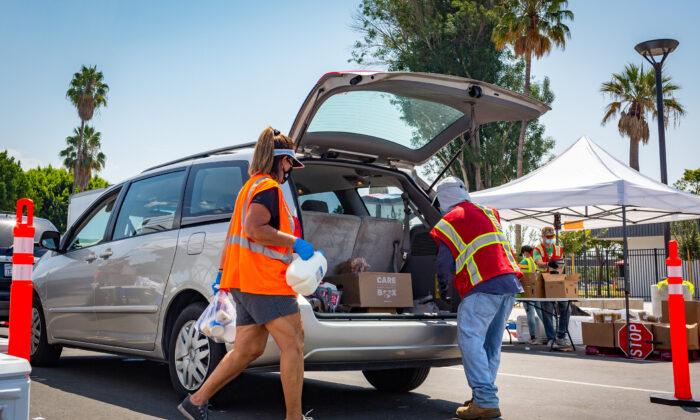As part of the CARES (Coronavirus Aid, Relief, and Economic Security) Act, Congress created a number of new incentives for businesses and individuals to donate more to charities. However, those incentives go away at the end of this tax year, so the time to give is now.
90 Percent
According to the Urban–Brookings Tax Policy Center, about 9 out of 10 individuals don’t itemize how much they gave to charities and other factors when they file their federal tax returns with IRS. Instead, these people take the “standard deduction” of $18,650 as a “head of household” or $24,800 for a couple filing jointly.So, a couple who together earns $65,000 (about the national average) can reduce the amount of income on which they pay taxes, with just the standard deduction, to $40,200 ($65,000 minus $24,800).
However, for the 2020 tax year only, that same couple can contribute up to $300 to any recognized charity and also deduct that money in addition to their standard deduction. Other tax filers such as heads of household or individuals also get the $300 additional deduction for a charitable donation.
10 Percent
About 10 percent of taxpayers list all the items on their tax form allowed by Congress and the IRS to be deducted from their gross income, to reduce their taxable income from the gross income earned down to what’s called adjusted gross income (AGI). In the example above, the AGI of the couple was $40,200 before they took advantage of the new one-year-only additional $300 deduction.Now, for a couple who earns $300,000 and would list itemize all their items allowed by Congress and the IRS to reduce their taxable income, let’s assume they normally can itemize $100,000 to reduce their $300,000 gross income to an AGI of $200,000.
For this tax year only, that couple can deduct up to 100 percent from their AGI of any amount they give in cash to any recognized charity.
That’s a really big deal.
A Huge Opportunity
That couple who makes $300,000 and might normally write off $100,000 in itemized deductions, for the 2020 tax year only, can give an additional $200,000 to charity and not pay any taxes on any of that $300,000 in gross income.Before the pandemic and the CARES Act, non-business taxpayers couldn’t deduct more than 60 percent of their AGI from their taxes for charitable giving. However, for this tax year only, they can deduct up to 100 percent of their AGI for donations in the form of cash to charities. Donations of stocks or other financial instruments and securities can’t be used to calculate the additional, temporary, one-year-only allowed itemized deduction to charities. It must be cash.
It appears that many wealthy families haven’t been advised about this opportunity to massively increase their giving to a favorite charity or foundation, according to Marty Dutch, an expert serving wealthy families, wealthy individuals, and many foundations at First Foundation Bank in Irvine, California.
“Donor-advised funds” are exempt from this one-year-only opportunity, so if a wealthy donor sets up a fund in which he or the family can control where the donations go, those entities may not benefit from this increase in potential giving. Folks may want to discuss this with their tax and investment professionals.
Dutch says charitable giving is substantially lower for arts institutions during the pandemic—they cannot perform or run normal operations, so their earned revenue is gone. “Nonprofit boards are facing difficult decisions such as, do we support our musicians/performers or the staff to run the organization? Quite often, these organizations provide arts education in our schools, and all of that is up in the air right now,” she said.
“We have so many organizations that will not survive because they do not have reserves. Most organizations have done their best to pivot, but fundraising efforts are difficult in a virtual world.”
But, of course, due to situations created by shelter-in-place edicts and the pandemic itself, many such charities could use even more resources.






Friends Read Free